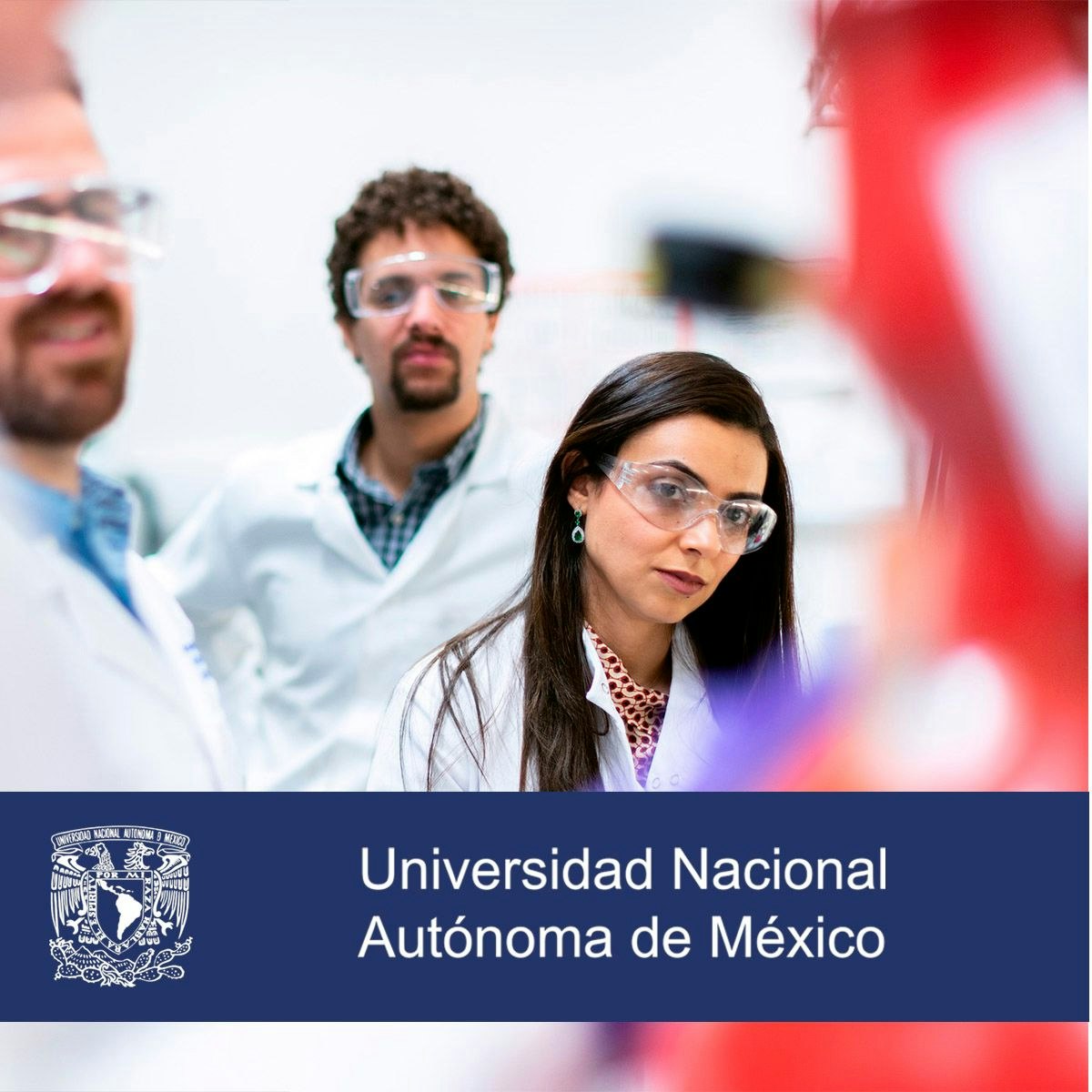Industrial Hygienist
Industrial Hygienist: Safeguarding Health in the Workplace
Industrial hygiene is a science and art devoted to the anticipation, recognition, evaluation, control, and prevention of environmental factors or stresses arising in or from the workplace, which may cause sickness, impaired health and well-being, or significant discomfort among workers or among citizens of the community. Professionals in this field, known as Industrial Hygienists, are essentially the guardians of worker health, applying scientific principles to protect people from workplace hazards.
Imagine delving into the unseen world of microscopic dusts, invisible gases, or harmful noise levels within a factory, construction site, or even an office building. Industrial hygienists investigate these potential dangers, using specialized instruments and analytical methods. They don't just identify problems; they develop practical solutions, ranging from recommending safer work practices to designing engineering controls like ventilation systems, ensuring people can do their jobs without compromising their long-term health. This blend of scientific investigation, problem-solving, and direct impact on people's lives makes it a uniquely rewarding field.
Introduction to Industrial Hygiene
Defining the Discipline
Industrial hygiene focuses specifically on health hazards within the work environment. It's distinct from general safety, though closely related, as its primary concern is the prevention of illnesses resulting from exposure to chemical, physical, biological, and ergonomic stressors. Think of it as occupational health science in action.
The scope is broad, covering diverse industries like manufacturing, construction, healthcare, mining, and petrochemicals. Anywhere people work, potential health hazards exist, and industrial hygienists play a critical role in managing them. Their work involves understanding complex interactions between workplace conditions and human physiology.
Ultimately, the goal is proactive protection. Industrial hygienists strive to anticipate potential problems before they cause harm, making workplaces healthier and more productive environments for everyone involved.
A Brief History
The roots of industrial hygiene trace back centuries, with early observations linking certain occupations to specific ailments. Bernardino Ramazzini, an Italian physician in the late 17th century, is often considered the "father of occupational medicine" for his systematic study of work-related diseases.
The Industrial Revolution dramatically increased awareness of workplace dangers, leading to early factory safety laws. However, the formal discipline of industrial hygiene emerged in the early 20th century in the United States, driven by pioneering figures like Alice Hamilton, who investigated toxic exposures in industries like lead and munitions manufacturing.
Major milestones include the establishment of governmental agencies like the U.S. Public Health Service and later, the Occupational Safety and Health Administration (OSHA) in 1970. These developments solidified the importance of scientific approaches to worker health protection and created the regulatory framework within which many hygienists operate today.
Core Objectives and Impact
The primary objective of industrial hygiene is safeguarding worker health. This involves preventing occupational diseases, injuries, and fatalities by controlling workplace hazards. It's about ensuring that people return home from work as healthy as they arrived.
Hazard prevention is achieved through a systematic process: anticipating potential issues in new processes or materials, recognizing existing hazards through observation and discussion, evaluating the extent of exposure through measurement and analysis, and controlling hazards through various interventions. This hierarchy of controls prioritizes eliminating the hazard, followed by engineering solutions, administrative changes, and finally, personal protective equipment.
Compliance with government regulations (like OSHA standards) is a fundamental aspect, ensuring baseline safety levels. However, many organizations strive for standards beyond mere compliance, recognizing that a healthy workforce is also a more productive and stable one. The field contributes significantly to public health by reducing the burden of work-related illness and injury on communities and healthcare systems.
Relation to Safety and Public Health
Industrial hygiene is a key component of the broader field of Occupational Safety and Health (OSH). While general safety often focuses on preventing acute injuries (slips, falls, cuts), industrial hygiene concentrates on health effects that may develop over time due to chronic or acute exposures to harmful agents.
There's significant overlap and collaboration. For instance, evaluating the risk of a chemical spill involves both safety (immediate injury potential) and hygiene (potential health effects from exposure). Many professionals work across both safety and hygiene domains, often holding titles like Environmental Health and Safety (EHS) Manager.
The connection to public health is profound. By preventing occupational diseases, industrial hygienists reduce community health burdens. They also address environmental concerns that affect both workers and the surrounding population, such as emissions from industrial facilities. Their expertise is vital in understanding how environmental exposures impact overall community well-being.
Core Responsibilities of an Industrial Hygienist
Anticipating and Recognizing Hazards
A primary function is identifying potential health hazards before they cause harm. This involves reviewing new chemicals, processes, or equipment designs to anticipate risks. It requires a deep understanding of chemistry, biology, physics, and toxicology.
Recognition involves inspecting workplaces, observing work practices, interviewing employees, and reviewing incident reports to identify existing hazards. These hazards fall into several categories: chemical (solvents, gases, dusts), physical (noise, radiation, temperature extremes), biological (bacteria, viruses, fungi), and ergonomic (repetitive motion, heavy lifting, poor workstation design).
This stage requires keen observation skills, scientific knowledge, and effective communication to understand the nuances of different work environments and tasks. It's detective work focused on health protection.
Evaluating Exposures and Assessing Risk
Once a potential hazard is recognized, the industrial hygienist must evaluate the extent of worker exposure. This often involves quantitative measurement using specialized instruments like air sampling pumps, noise dosimeters, and radiation detectors.
Samples collected (e.g., air samples, surface wipes) are typically analyzed in a laboratory. The results are then compared to established occupational exposure limits (OELs) set by organizations like OSHA or the American Conference of Governmental Industrial Hygienists (ACGIH).
Risk assessment combines exposure data with information about the hazard's toxicity or potential harm. This process determines the likelihood and severity of potential health effects, prioritizing which hazards require the most urgent attention and control measures.
These courses offer foundational knowledge in identifying hazards and assessing risks in various workplace settings.
Designing and Implementing Control Measures
The ultimate goal is to control hazards and reduce exposures to acceptable levels. Industrial hygienists recommend and help implement controls following the hierarchy of controls: elimination/substitution (removing the hazard or using a safer alternative), engineering controls (modifying the workplace, like installing ventilation), administrative controls (changing work procedures, like job rotation), and personal protective equipment (PPE).
Engineering controls are generally preferred as they address the hazard at its source. Administrative controls modify how work is done. PPE, such as respirators, gloves, or hearing protection, is considered the last line of defense when other controls are insufficient or infeasible.
Designing effective controls requires creativity, technical knowledge, and collaboration with engineers, managers, and workers. It involves understanding the specific work process and finding practical, sustainable solutions.
Understanding PPE and its proper management is crucial when other control methods are insufficient.
Ensuring Regulatory Compliance and Reporting
Industrial hygienists play a crucial role in helping organizations comply with occupational health regulations, such as those mandated by OSHA in the US or similar bodies internationally. This involves staying updated on complex legal requirements and standards.
Responsibilities include conducting required monitoring (e.g., noise surveys, air sampling for specific chemicals), maintaining accurate records of exposures and control measures, training employees on hazards and safe work practices, and preparing reports for regulatory agencies.
Effective communication and documentation are vital. Hygienists must clearly explain technical findings and compliance requirements to both management and workers, ensuring everyone understands their roles and responsibilities in maintaining a safe and compliant workplace.
Familiarity with specific regulations, like those from OSHA, is essential for compliance.
Emergency Response and Preparedness
Industrial hygienists often contribute to emergency response planning, particularly for incidents involving hazardous materials releases (chemical spills, biological exposures). Their expertise is critical in assessing the immediate health risks to responders and the surrounding community.
During an emergency, they may conduct rapid hazard assessments, recommend appropriate PPE for responders, perform environmental monitoring, and advise on decontamination procedures. Their role helps ensure that response efforts protect human health effectively.
Preparedness involves developing response plans, training personnel, and ensuring necessary equipment is available and maintained. This proactive planning minimizes the health impact of potential workplace emergencies.
These books offer comprehensive guidance on safety principles and accident prevention, relevant for emergency preparedness.
Formal Education Pathways
Undergraduate Foundations
A bachelor's degree is typically the minimum requirement to enter the field, often serving as a stepping stone to entry-level technician roles or graduate studies. Relevant undergraduate majors provide a strong scientific foundation.
Degrees in chemistry, biology, physics, engineering (especially chemical, environmental, or mechanical), or environmental science are common starting points. These programs develop critical analytical and problem-solving skills essential for industrial hygiene work.
Some universities offer specific bachelor's programs in industrial hygiene or occupational health and safety. These provide more targeted coursework but are less common than the foundational science and engineering degrees. Regardless of the major, coursework in math, statistics, chemistry, physics, and biology is crucial.
For those exploring foundational sciences, OpenCourser offers resources across various disciplines. You can browse science courses to build a strong base.
Graduate Programs: The Standard Path
A Master's degree (M.S., M.P.H.) in Industrial Hygiene or Occupational Health is often considered the standard professional qualification, particularly for roles involving greater autonomy, complex assessments, and leadership potential. These programs provide specialized knowledge and skills.
Graduate curricula typically cover core areas like toxicology, epidemiology, ergonomics, air sampling and instrumentation, ventilation design, biostatistics, risk assessment, and occupational safety management. Many programs include fieldwork or internships, offering valuable practical experience.
Pursuing a graduate degree is also a common pathway for career changers who hold a bachelor's degree in a related science or engineering field but lack specific OSH coursework. It provides the necessary focused education to transition successfully.
Doctoral Studies and Research
A Ph.D. in Industrial Hygiene, Environmental Health Sciences, or a related field prepares individuals for careers in academia, advanced research, or high-level consulting and policy development. Doctoral programs focus on generating new knowledge and advancing the field.
Research areas are diverse and reflect the evolving challenges in occupational health. Common topics include advanced exposure assessment methodologies, nanotoxicology (health effects of engineered nanomaterials), molecular epidemiology (linking exposures to biological markers), occupational ergonomics, and the health impacts of emerging technologies or climate change on workers.
A Ph.D. requires significant dedication to research, culminating in a dissertation that makes an original contribution to the field. Graduates often become leaders in research institutions, government agencies, or specialized consulting firms.
Accreditation and Program Choice
When selecting a graduate program, accreditation is an important consideration. In the United States, programs accredited by the Accreditation Board for Engineering and Technology (ABET) under their Applied and Natural Science Accreditation Commission (ANSAC) meet rigorous educational standards for industrial hygiene.
Additionally, many top programs are housed within Education and Research Centers (ERCs) funded by the National Institute for Occupational Safety and Health (NIOSH). ERCs offer interdisciplinary training and often provide traineeship funding opportunities.
Choosing an accredited program, particularly one within an ERC, can enhance career prospects and may be beneficial or required for certain certifications, like the Certified Industrial Hygienist (CIH) credential.
Online and Self-Directed Learning
Supplementing Formal Education
Online courses offer excellent opportunities to supplement formal education or explore the field before committing to a full degree program. They can provide foundational knowledge in areas like chemistry, biology, or environmental science, which are prerequisites for many industrial hygiene programs.
For students already enrolled in a relevant degree, online courses can deepen understanding of specific topics like toxicology, risk assessment principles, or specific OSHA standards. They offer flexibility to learn at one's own pace alongside traditional coursework.
Platforms like OpenCourser aggregate courses from various providers, allowing learners to find specific topics easily. You can explore areas like Environmental Sciences or Health & Medicine to find relevant introductory or supplementary material.
Core Topics for Self-Study
Individuals considering a career change or exploring the field can benefit greatly from self-directed learning using online resources. Key topics to focus on include basic toxicology (how substances affect the body), principles of exposure assessment, introduction to occupational safety regulations (like OSHA basics), and fundamentals of risk assessment.
Understanding different hazard types (chemical, physical, biological, ergonomic) is also crucial. Online courses covering environmental health or public health often touch upon these areas, providing a good starting point.
While self-study alone isn't sufficient to become a fully qualified industrial hygienist, it builds a strong foundation, demonstrates initiative, and helps individuals determine if the field aligns with their interests and aptitude before investing in formal education or certification.
These courses introduce core concepts in environmental health, workplace safety, and hazard identification.
Micro-Credentials and Specialized Skills
The field often requires specialized knowledge. Online platforms increasingly offer micro-credentials or certificates focusing on specific skills relevant to industrial hygiene, such as air quality monitoring, noise measurement techniques, hazardous waste operations (HAZWOPER), or specific software used for exposure modeling.
These shorter, focused courses can be valuable for professionals seeking continuing education credits or for individuals wanting to add specific skills to their resumes. They demonstrate competency in niche areas that may be required for certain roles or industries.
While not a substitute for broad foundational knowledge or certification, micro-credentials can enhance employability and provide practical skills applicable in the field. OpenCourser's Professional Development section may list relevant skill-based courses.
These courses cover specific workplace hazards and safety protocols, useful for specialization.
Blending Online Learning with Practical Experience
Industrial hygiene is an applied science requiring hands-on experience. Online learning is most effective when combined with practical application. This could involve internships, volunteer opportunities, or entry-level technician roles where one can observe and assist experienced hygienists.
Learners can use online courses to understand the theory behind sampling methods or control technologies, then seek opportunities to apply that knowledge in a real-world setting under supervision. Building a portfolio through independent projects, even small-scale ones like researching hazards in a specific local industry (using publicly available data), can also demonstrate practical application.
For career changers, bridging the gap between theoretical knowledge gained online and the practical demands of the job is crucial. Seeking mentorship and entry-level positions that offer on-the-job training is often a necessary step after completing relevant coursework.
OpenCourser's Learner's Guide offers tips on structuring self-learning and potentially creating projects to supplement online coursework.
Career Progression and Roles
Entry-Level Opportunities
With a relevant bachelor's degree, individuals might start as Industrial Hygiene Technicians, Safety Technicians, or Environmental Technicians. These roles often involve assisting senior hygienists with fieldwork, collecting samples, calibrating equipment, and maintaining records.
These positions provide invaluable hands-on experience and exposure to the practical aspects of the profession. They are excellent stepping stones for those planning to pursue graduate education or certification later in their careers.
Some entry-level roles might be available directly in industrial settings, consulting firms, or government agencies. Competition can be present, and demonstrating a strong foundational knowledge (potentially supplemented by relevant online courses or internships) is beneficial.
Mid-Career Specialization and Advancement
With experience and often a Master's degree and/or certification (like the CIH), industrial hygienists can advance to roles with greater responsibility and specialize in specific areas. Common specializations align with industries like construction, healthcare, manufacturing, mining, oil and gas, or pharmaceuticals.
Other specializations focus on specific hazard types, such as chemical exposure assessment, noise control, ergonomics, radiation safety, or indoor air quality. Mid-career professionals often manage projects, develop comprehensive health and safety programs, supervise junior staff, and interact more directly with management and regulatory agencies.
Roles may include Industrial Hygienist, Senior Industrial Hygienist, EHS Specialist, or Safety Engineer, depending on the organization and specific focus.
Leadership and Consulting Roles
Experienced and highly qualified industrial hygienists can progress into leadership positions. These roles might include EHS Manager, Director of Health and Safety, or Corporate Industrial Hygienist, overseeing programs across multiple sites or entire organizations.
Another common path is consulting. Industrial hygiene consultants provide expert advice and services to various clients who may lack in-house expertise. This requires strong technical skills, business acumen, and communication abilities.
Some pursue careers in academia, teaching and conducting research, or work for government agencies like OSHA or NIOSH, developing policies, conducting inspections, or performing research. These roles often require advanced degrees (Ph.D.) and significant experience.
Salary Expectations and Market Demand
Salaries for industrial hygienists vary based on education, experience, certification, industry, geographic location, and level of responsibility. Generally, it is a well-compensated profession reflecting the specialized knowledge and critical importance of the role.
According to the U.S. Bureau of Labor Statistics (BLS), Occupational Health and Safety Specialists and Technicians (a category including industrial hygienists) have a positive job outlook. Demand is driven by the need to comply with regulations, protect workers, and reduce costs associated with workplace injuries and illnesses.
Holding advanced degrees and professional certifications, such as the CIH, typically leads to higher earning potential and more senior roles. Industries like oil and gas, consulting, and pharmaceuticals often offer higher compensation levels.
Industrial Hygienist Certifications
The Certified Industrial Hygienist (CIH)
The premier credential in the field is the Certified Industrial Hygienist (CIH), awarded by the Board for Global EHS Credentialing (BGC, formerly ABIH). Achieving CIH status signifies a high level of knowledge, competence, and ethical standards.
Eligibility requirements are rigorous, typically involving a combination of specific education (often a relevant bachelor's or master's degree from an accredited program), several years of professional industrial hygiene experience, and passing a comprehensive examination. The exam covers a broad range of topics, including toxicology, exposure assessment, controls, regulations, and program management.
Many employers prefer or require the CIH for mid-level and senior positions. It enhances credibility, demonstrates commitment to the profession, and often leads to greater career opportunities and higher salaries.
This study guide is a valuable resource for those preparing for professional safety certifications like the CIH.
Maintaining Certification and Continuing Education
Certification is not a one-time achievement. Certified Industrial Hygienists must maintain their credential through continuous professional development, known as Certification Maintenance (CM). This ensures they stay current with advancements in the field, new regulations, and emerging technologies.
CM typically requires earning a specific number of points over a multi-year cycle by participating in activities such as attending conferences, taking courses (including relevant online courses), publishing articles, giving presentations, or engaging in professional service.
This commitment to lifelong learning is essential in a field where scientific understanding and regulatory landscapes are constantly evolving. Staying current ensures hygienists provide the most effective protection based on the latest knowledge.
Many online courses related to OSHA, ISO standards, and specific hazards can contribute to continuing education requirements.
Niche Certifications and Specializations
Beyond the comprehensive CIH, other certifications exist for specialized areas within occupational safety and health. Examples include Certified Safety Professional (CSP), Occupational Hygiene Technologist (OHST), Construction Health and Safety Technician (CHST), Certified Hazardous Materials Manager (CHMM), or certifications specific to asbestos inspection or radiation safety.
These credentials can be valuable for individuals focusing on specific industries or hazard types. They demonstrate specialized expertise that may be required or preferred for certain roles.
Choosing which certifications to pursue depends on individual career goals, industry focus, and specific job requirements. Some professionals hold multiple certifications to showcase broad and deep expertise.
International Equivalents
While the CIH is globally recognized, various countries and regions have their own professional bodies and certification schemes for occupational hygienists. Examples include the Chartered Member status with the Faculty of Occupational Hygiene (FoH) in the UK, part of the British Occupational Hygiene Society (BOHS), or certifications recognized by national associations affiliated with the International Occupational Hygiene Association (IOHA).
These national or regional credentials often have requirements similar to the CIH, involving specific education, experience, and examination. Some organizations have mutual recognition agreements, facilitating international mobility for certified professionals.
Understanding the relevant credentialing bodies and requirements is important for those planning to work internationally in the field of industrial hygiene.
Tools and Technologies in Industrial Hygiene
Monitoring and Sampling Equipment
A core part of the job involves using specialized instruments to measure workplace contaminants and physical stressors. This includes personal air sampling pumps worn by workers to collect airborne dusts, vapors, or gases over a work shift.
Direct-reading instruments provide real-time measurements for agents like combustible gases, oxygen levels, or specific chemicals. Noise dosimeters measure cumulative noise exposure, while sound level meters assess instantaneous noise levels. Other tools measure vibration, radiation, temperature, and lighting levels.
Proficiency in selecting, using, and calibrating these instruments is essential for accurate exposure assessment. It requires understanding the principles behind how each device works and its limitations.
Data Analysis and Modeling Software
Collected data must be analyzed to determine exposure levels and assess risk. Statistical software packages are used to analyze exposure data, compare results to occupational exposure limits, and identify trends or patterns.
Exposure modeling software can estimate potential exposures based on workplace parameters, chemical properties, and task descriptions. This is particularly useful in situations where direct measurement is difficult or for predicting exposures in hypothetical scenarios.
Database software helps manage large amounts of monitoring data, employee records, and compliance information efficiently. Proficiency with data analysis tools and techniques is increasingly important for modern industrial hygienists.
Emerging Technologies
The field is continuously evolving with new technologies. Wearable sensors are emerging that can provide continuous, real-time monitoring of physiological parameters or environmental exposures, offering a more detailed picture of worker risk throughout the day.
Drones are being explored for remote sampling or site assessments in hazardous or hard-to-reach areas. Artificial intelligence (AI) and machine learning are being investigated for their potential to predict risks based on large datasets, analyze complex exposure scenarios, or optimize control strategies.
Staying abreast of these technological advancements is important for future-proofing skills and leveraging new tools to improve worker protection. Embracing innovation allows hygienists to work more efficiently and effectively.
Calibration and Maintenance Importance
The accuracy of monitoring results depends entirely on the proper functioning and calibration of sampling equipment. Industrial hygienists are responsible for ensuring their instruments provide reliable data.
Regular calibration against known standards is crucial. This involves adjusting instruments to ensure they measure accurately. Detailed records of calibration and maintenance must be kept for quality assurance and potential legal scrutiny.
Understanding calibration procedures and troubleshooting common equipment issues are essential practical skills. Without accurate data from well-maintained instruments, exposure assessments and subsequent control decisions can be flawed.
Ethical and Legal Challenges
Balancing Business Needs and Worker Health
Industrial hygienists often operate at the intersection of worker health protection and business objectives. Recommending control measures, especially costly engineering solutions, can sometimes create tension with management focused on production and profitability.
Navigating this requires strong ethical principles, excellent communication skills, and the ability to justify recommendations based on sound science, risk assessment, and regulatory requirements. The primary ethical obligation is always to protect worker health.
Building trust and demonstrating the long-term value of a healthy workforce (reduced absenteeism, lower healthcare costs, improved morale, avoidance of fines) can help align safety goals with business interests.
Ethical Dilemmas and Whistleblowing
Situations may arise where hygienists uncover significant risks that management is unwilling to address adequately. This can create profound ethical dilemmas regarding professional responsibility versus job security.
Professional codes of ethics provide guidance, emphasizing the duty to hold paramount the health and safety of workers and the public. In severe cases of non-compliance or imminent danger, hygienists may face difficult decisions about reporting issues internally or externally (e.g., to regulatory agencies).
Understanding whistleblower protections and the potential personal and professional consequences of such actions is important. Maintaining professional integrity in challenging situations is a hallmark of the profession.
Regulatory Non-Compliance and Consequences
Failure to comply with occupational health and safety regulations can lead to significant consequences for organizations. These include citations and fines from agencies like OSHA, potential lawsuits from affected employees, reputational damage, and increased insurance costs.
Industrial hygienists play a key role in preventing non-compliance by identifying hazards, recommending controls, and ensuring proper documentation. Their work helps organizations avoid legal and financial penalties.
Understanding the legal framework and the potential liabilities associated with workplace exposures is crucial for providing effective counsel to employers and protecting workers' rights.
Challenges in Global Operations
For multinational corporations, ensuring consistent health and safety standards across different countries presents unique challenges. Regulatory requirements, cultural norms, available resources, and enforcement levels can vary significantly.
Industrial hygienists working in global roles must navigate these complexities, often striving to implement a unified corporate standard that meets or exceeds local requirements everywhere. This requires cultural sensitivity, adaptability, and a deep understanding of international OSH practices.
Ensuring ethical sourcing and worker protection throughout complex global supply chains adds another layer of complexity, demanding diligence and commitment to universal health and safety principles.
Global Demand for Industrial Hygienists
Varying Regulatory Landscapes
The demand for industrial hygienists is influenced by the strength and enforcement of occupational health regulations in different regions. Countries with well-established agencies like OSHA (USA), the Health and Safety Executive (HSE) in the UK, or similar bodies within the European Union generally have a higher demand.
Developing nations are increasingly recognizing the importance of occupational health, leading to growing opportunities, although resources and enforcement may still be catching up. International organizations like the World Health Organization (WHO) and the International Labour Organization (ILO) promote global standards.
Understanding the specific regulatory environment of a region is crucial for practicing industrial hygiene effectively there.
High-Growth Industries
Certain industries inherently involve significant potential health hazards, driving consistent demand for industrial hygienists. These include mining, construction, manufacturing (especially involving chemicals or heavy processes), oil and gas extraction, healthcare, and pharmaceuticals.
As new industries emerge, they also create demand. For example, the growth of advanced manufacturing, biotechnology, and renewable energy sectors brings novel materials and processes that require expert health risk assessment and management.
Professionals willing to work in these demanding, and sometimes remote, industrial settings are often highly sought after.
Globalization and Safety Standards
Globalization has increased the complexity of managing occupational health. Multinational companies often strive to implement consistent global safety standards, requiring hygienists who can work across different cultural and regulatory contexts.
There is also growing awareness among consumers and investors about ethical sourcing and worker conditions in global supply chains. This puts pressure on companies to ensure adequate health and safety practices not just in their own facilities but also among their suppliers worldwide.
This trend creates opportunities for hygienists involved in supply chain audits, developing global EHS programs, and promoting best practices internationally.
Remote Work and Consulting Opportunities
While much industrial hygiene work requires on-site presence for inspections and sampling, technology is enabling some aspects to be done remotely. Data analysis, report writing, program development, and virtual training can often be performed from anywhere.
This trend opens up possibilities for remote consulting, where experts can provide advice to clients globally without constant travel. It also allows for more flexible work arrangements for some in-house roles, though fieldwork remains a core component for many.
The ability to leverage technology for remote collaboration and analysis is becoming an increasingly valuable skill in the globalized landscape of industrial hygiene.
Industrial Hygienist in Emerging Industries
Renewable Energy Sector
The shift towards renewable energy sources like solar, wind, and battery production introduces new occupational health challenges. Manufacturing solar panels can involve exposure to hazardous chemicals, while battery production involves risks associated with heavy metals and electrolytes.
Installation and maintenance of wind turbines involve working at heights and potential ergonomic hazards. Industrial hygienists are needed to assess these risks, develop safe work procedures, and ensure worker protection as these industries grow.
Understanding the unique materials and processes in the green energy sector is becoming an important area of specialization.
Nanotechnology and Advanced Materials
The increasing use of engineered nanomaterials in various products presents novel toxicological challenges. The small size of these particles can lead to unique interactions within the body, and their long-term health effects are often still under investigation.
Industrial hygienists play a critical role in evaluating potential exposures during the manufacturing and handling of nanomaterials. They develop specialized control strategies, such as enhanced ventilation and containment, and contribute to establishing safe handling guidelines in this rapidly evolving field.
Expertise in assessing risks associated with novel materials is crucial for protecting workers in research labs and advanced manufacturing facilities.
The Gig Economy and Non-Traditional Work
The rise of the gig economy and remote work presents new challenges for occupational health. Traditional employer-employee relationships are changing, potentially leaving workers in non-traditional arrangements with less access to formal safety programs and protections.
Industrial hygienists may need to adapt their approaches to address risks in home offices (ergonomics, indoor air quality) or for mobile workers who move between different environments. Developing guidance and resources for self-employed individuals or small businesses becomes increasingly important.
Ensuring health and safety equity across different employment models is an emerging area of focus for the profession.
Climate Change Adaptation
Climate change is creating new occupational hazards and exacerbating existing ones. Increased frequency and intensity of heatwaves pose risks of heat stress for outdoor workers and those in non-air-conditioned environments.
More extreme weather events can create hazardous working conditions for emergency responders and cleanup crews. Changes in vector habitats may increase exposure risks to infectious diseases for agricultural and forestry workers.
Industrial hygienists will need to incorporate climate change considerations into their risk assessments and develop adaptation strategies to protect workers from these evolving environmental threats.
Frequently Asked Questions
Is a graduate degree mandatory for entry-level roles?
While a Master's degree (or higher) is often preferred and is typically required for advancement and certification like the CIH, it's not always mandatory for initial entry into the field. A strong bachelor's degree in a relevant science or engineering field can qualify individuals for entry-level technician positions.
These technician roles provide valuable practical experience. Many professionals start as technicians while pursuing graduate studies part-time or gain experience before applying to a Master's program.
However, for roles involving independent decision-making, program management, and full professional practice as an Industrial Hygienist, a graduate degree is generally the standard expectation in the industry.
How does industrial hygiene differ from occupational safety?
Industrial hygiene primarily focuses on anticipating, recognizing, evaluating, and controlling environmental factors or stresses that can cause *illness* or *impaired health*. It deals mainly with health hazards like chemical exposures, noise, radiation, and biological agents, often involving chronic effects.
Occupational safety primarily focuses on preventing *injuries* resulting from accidents or acute incidents. It deals more with safety hazards like slips, trips, falls, machine guarding, electrical safety, and fire prevention.
While distinct, the two fields are closely related and often overlap within an organization's Environmental Health and Safety (EHS) department. Many professionals have expertise and responsibilities in both areas.
What industries hire the most industrial hygienists?
Demand is strong across various sectors. Key industries include manufacturing (chemicals, pharmaceuticals, automotive, aerospace), construction, oil and gas, mining, healthcare (hospitals often have IHs managing infection control, chemical safety, ergonomics), and government agencies (OSHA, NIOSH, military, state health departments).
Consulting firms are also major employers, providing expertise to diverse clients across many industries. Universities and research institutions employ hygienists for research and teaching roles.
Essentially, any industry with significant potential for worker exposure to chemical, physical, biological, or ergonomic hazards requires the expertise of industrial hygienists.
Can certifications compensate for lack of experience?
Certifications like the CIH require a significant amount of documented professional experience *in addition* to education and passing an exam. Therefore, you cannot obtain the premier certification without substantial experience.
Lower-level certifications or certificates from training courses (like OSHA outreach training or specialized skill courses) can demonstrate knowledge and initiative, which might be helpful for entry-level positions or when combined with a relevant degree.
However, these cannot fully substitute for the hands-on experience gained through working in the field under supervision. Practical experience is essential for developing the judgment and skills needed to be an effective industrial hygienist.
How is automation changing the field?
Automation impacts industrial hygiene in several ways. Automating hazardous processes can eliminate or reduce worker exposure, which is a positive outcome aligned with the hierarchy of controls. However, automation can also introduce new risks, such as ergonomic issues related to maintaining robotic systems or new hazards associated with automated system materials.
Automation is also changing monitoring. Automated sensors and data logging systems can provide more continuous and comprehensive exposure data. AI may help analyze large datasets to identify subtle risks or predict exposures more accurately.
Hygienists need to adapt by understanding how automation changes workplace risks and by leveraging new technologies for more effective monitoring and control.
What are typical workplace settings (lab vs. field)?
The work environment for an industrial hygienist is highly varied. A significant portion often involves fieldwork: visiting work sites (factories, construction sites, hospitals, mines, offices) to conduct inspections, observe processes, interview workers, and collect samples.
Time is also spent in the office analyzing data, writing reports, researching regulations, developing training materials, and communicating findings. Some hygienists may spend time in laboratories, either analyzing samples themselves (less common now with specialized labs) or coordinating with lab personnel.
The balance between field, office, and potentially lab work depends heavily on the specific role, industry, and organization. Consulting roles often involve more travel and fieldwork compared to some in-house corporate positions.
Helpful Resources
For those seriously considering a career in industrial hygiene, exploring resources from professional organizations and government agencies is highly recommended. These sites offer valuable information on career paths, educational requirements, certification, and current issues in the field.
- American Industrial Hygiene Association (AIHA): A leading professional organization offering resources, publications, conferences, and information about the field.
- Board for Global EHS Credentialing (BGC): The body that administers the CIH certification; provides information on eligibility, exams, and maintaining certification.
- Occupational Safety and Health Administration (OSHA) - Industrial Hygiene: Provides regulatory information, standards, and resources related to workplace health hazards in the U.S.
- National Institute for Occupational Safety and Health (NIOSH) - Industrial Hygiene: Conducts research and provides recommendations for preventing work-related injury and illness.
- American Conference of Governmental Industrial Hygienists (ACGIH): Develops widely recognized occupational exposure limits (TLVs) and provides scientific resources.
- OpenCourser - Health & Medicine Courses: Explore online courses related to health, safety, and environmental science.
- OpenCourser - Environmental Sciences Courses: Find courses covering environmental principles relevant to the field.
Embarking on a career as an Industrial Hygienist requires dedication to scientific principles and a genuine commitment to protecting people's health. It's a challenging but deeply rewarding profession that makes a tangible difference in the workplace and contributes significantly to public health. Whether you are exploring options, pursuing education, or seeking to advance your skills, resources like OpenCourser and professional organizations can support your journey in this vital field.




































